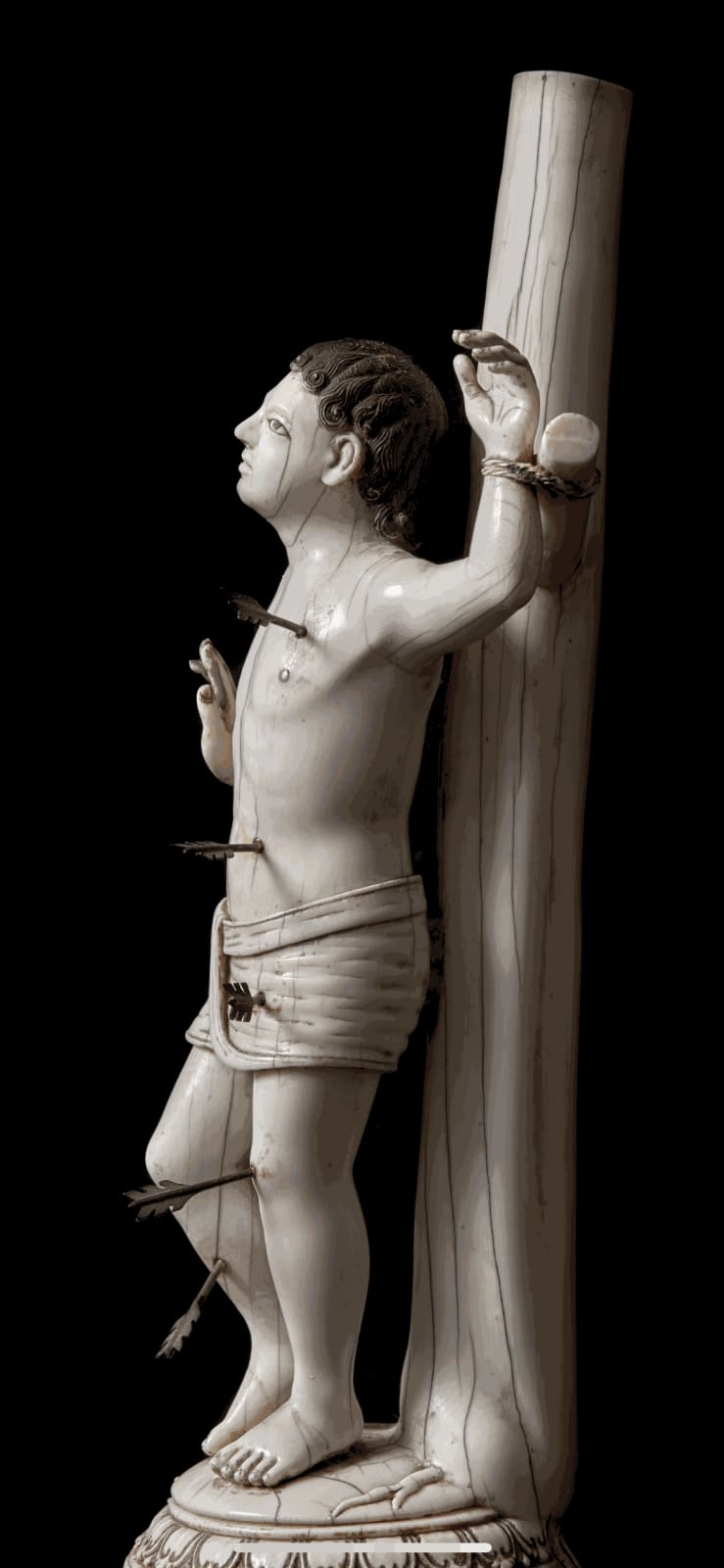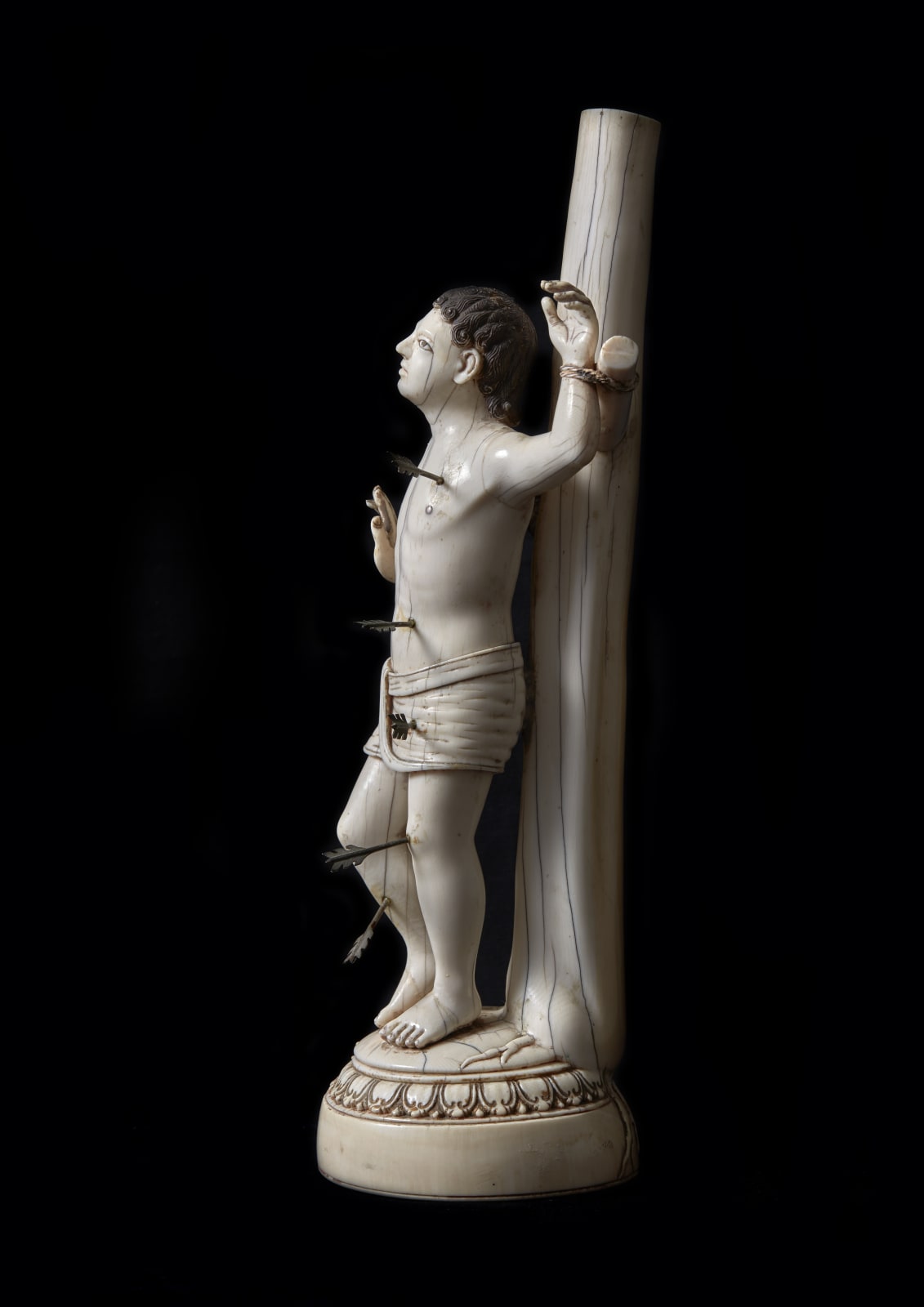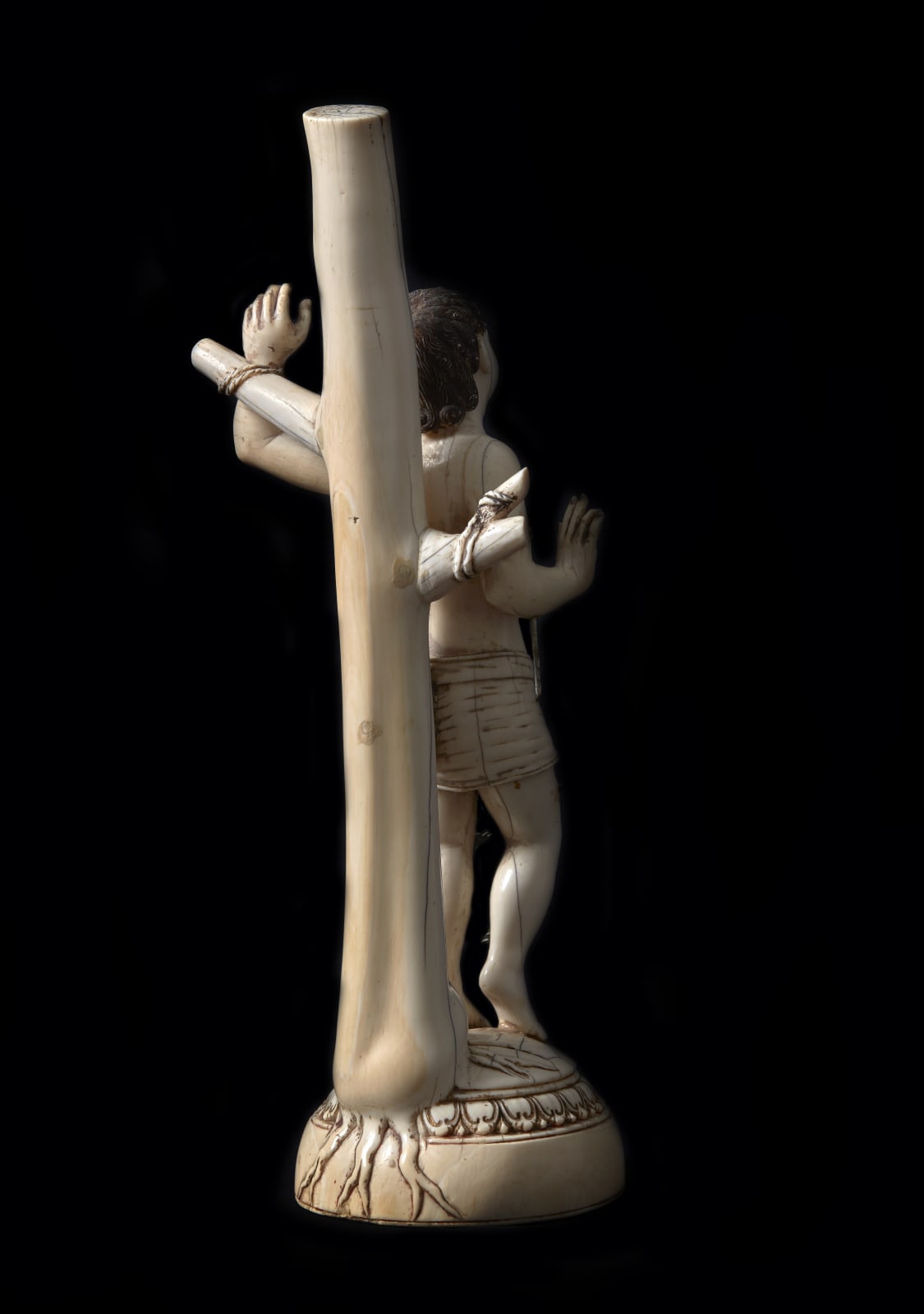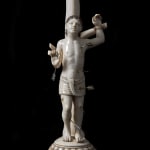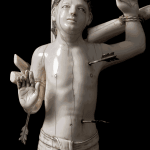SAINT SEBASTIAN
Further images
Provenance
Private Colecction
The fine carving of the facial features and the folds on the drapery are typical of Sri Lanka ivories. From thesixteenth century, the Portuguese were active as traders and later as rulers in Sri Lanka (formerly called Ceylon).
Ivory Sculptures were locally produced in large numbers for an European clientele, and their style of carvingcombines Sri Lankan with European traditions.
Ivory carvings had a long tradition on the Indian subcontinent, and elaborate works of art were made, particularlyas diplomatic gifts, often presented to Western rulers. From the sixteenth century onwards, the four mainmissionary orders, The Augustinians, Jesuits, Dominicans and Franciscans, built churches and aimed to convertthe inhabitants of India. The ivories would assist in the presentation of Christian imagery, as well as beingexported back to churches, convents and private collectors in Europe.
The depictions ofSaint Sebastianundergoing the martyrdom are plenty in Christian iconography because, sincethe Middle Ages, he was considered a patron saint against diseases. A young Roman soldier, commander ofthe Praetorian guard of Emperor Diocletian, when it was discovered he was a Christian, he was detained andcondemned to die pierced by two soldiers' arrows. During the Renaissance, this saint continued to be one ofthe favourite subjects, both for patrons, due to his protective sense, and for artists, who found an excuse to showa nude similar to the classic ones. The Baroque era discovered the scene's drama and took advantage of it in amasterly fashion.


